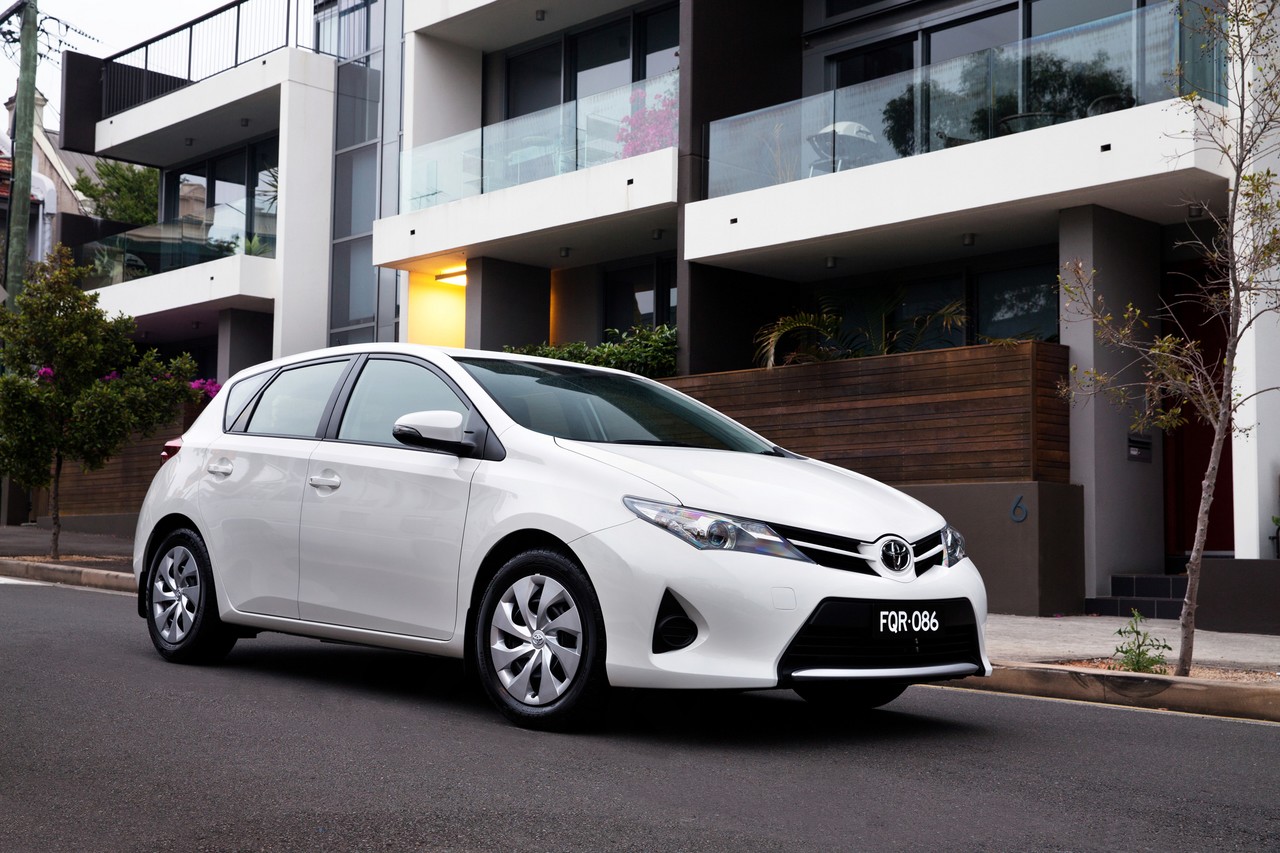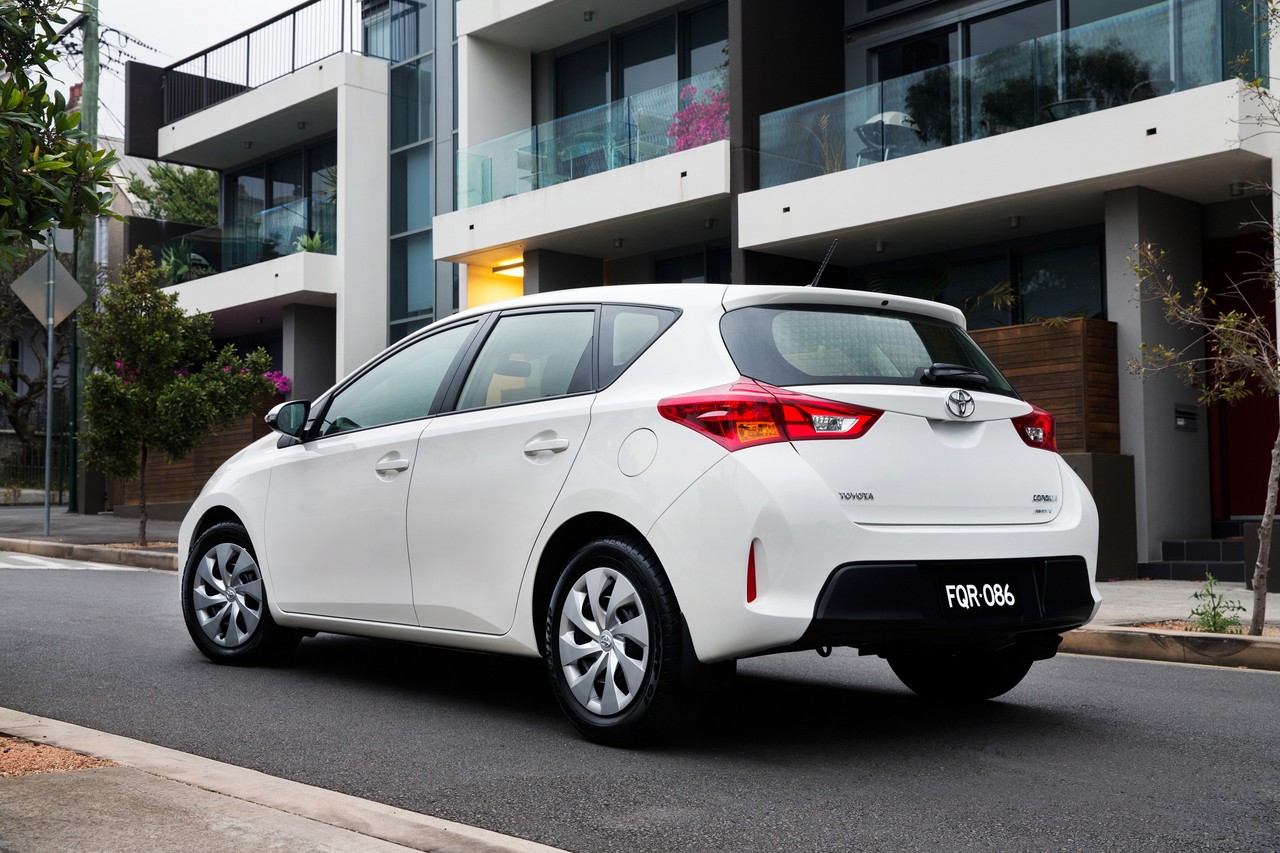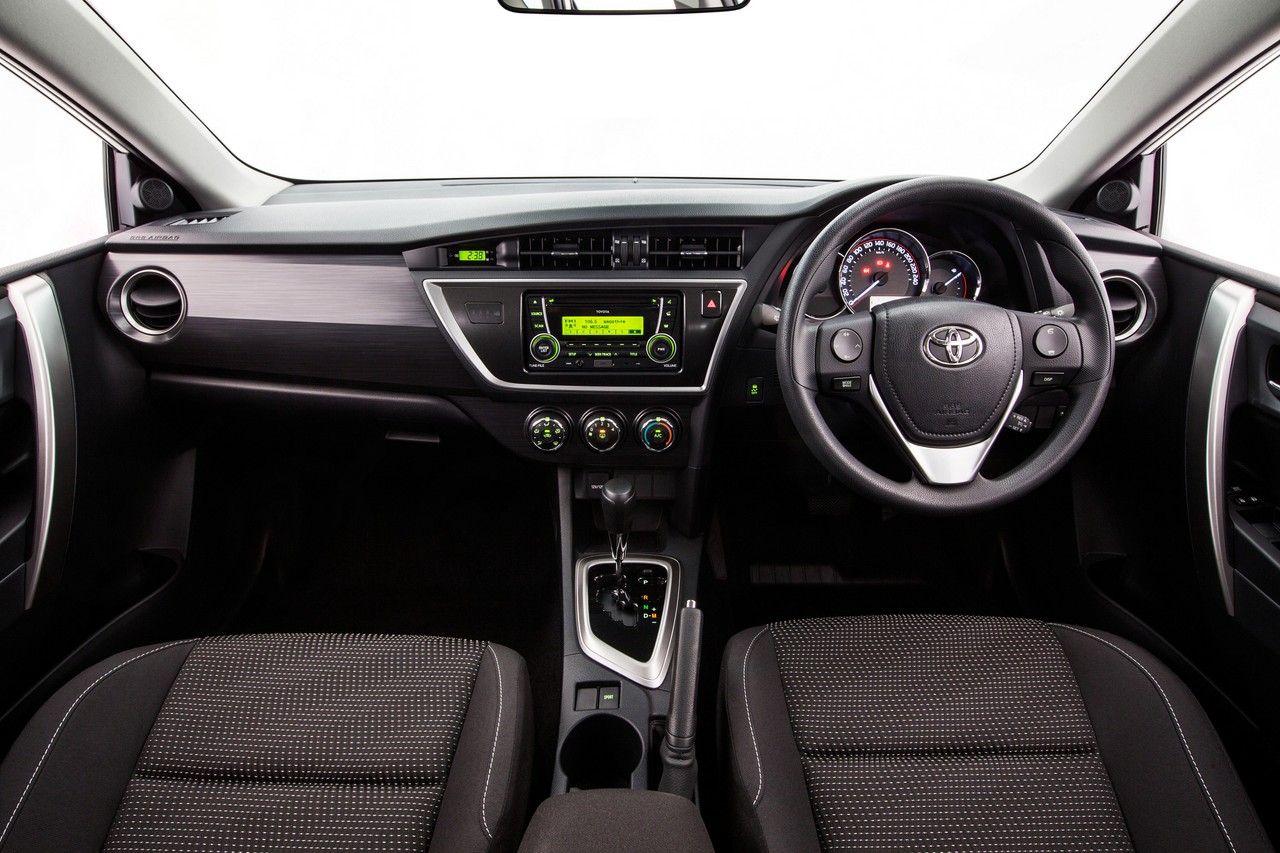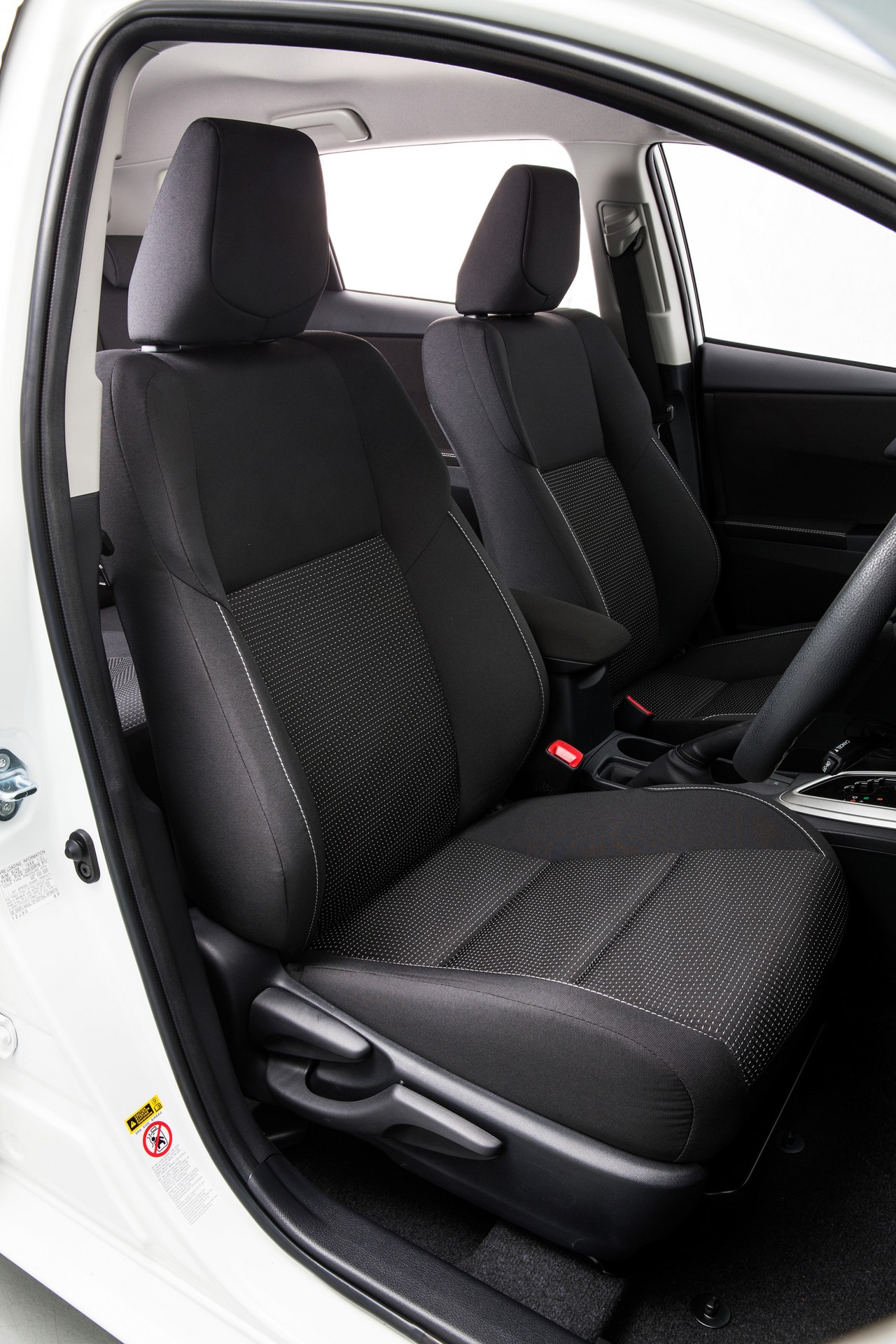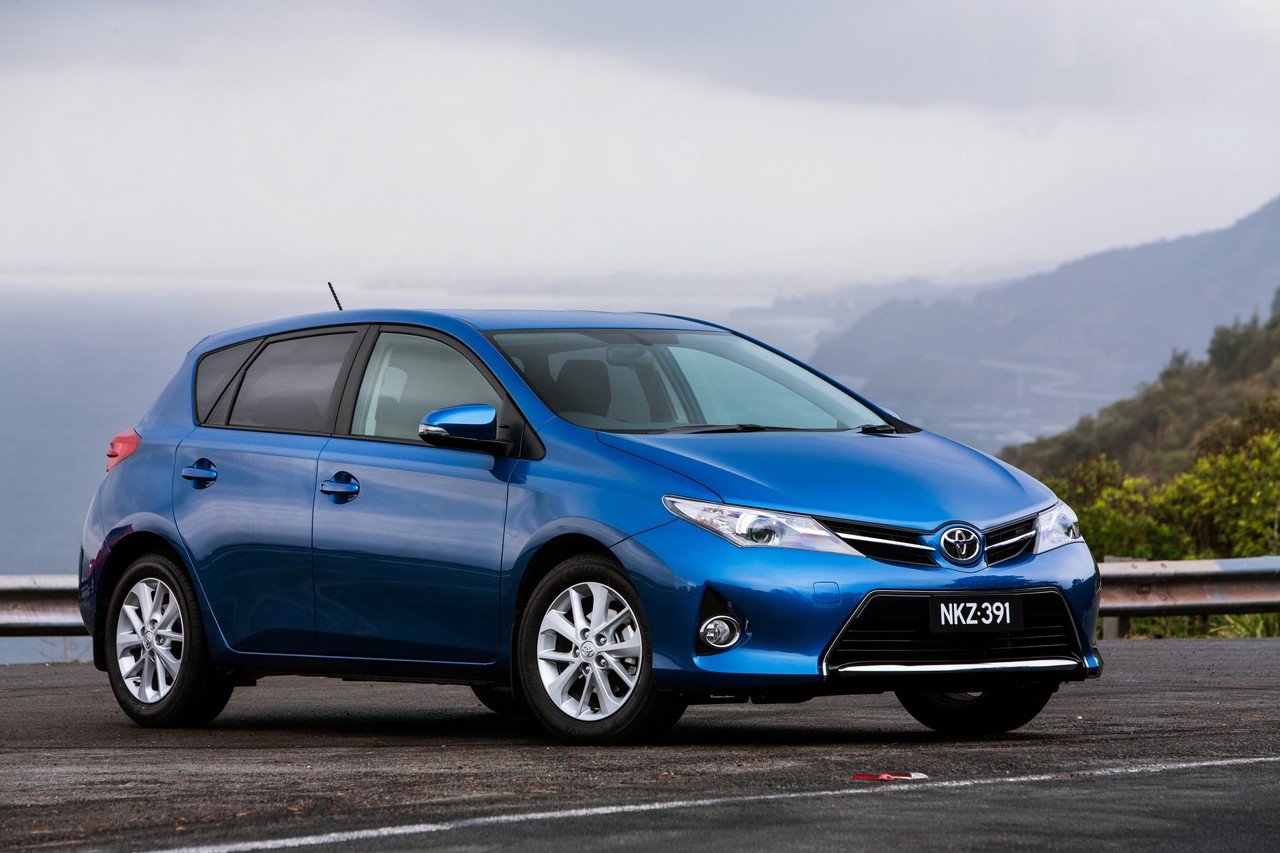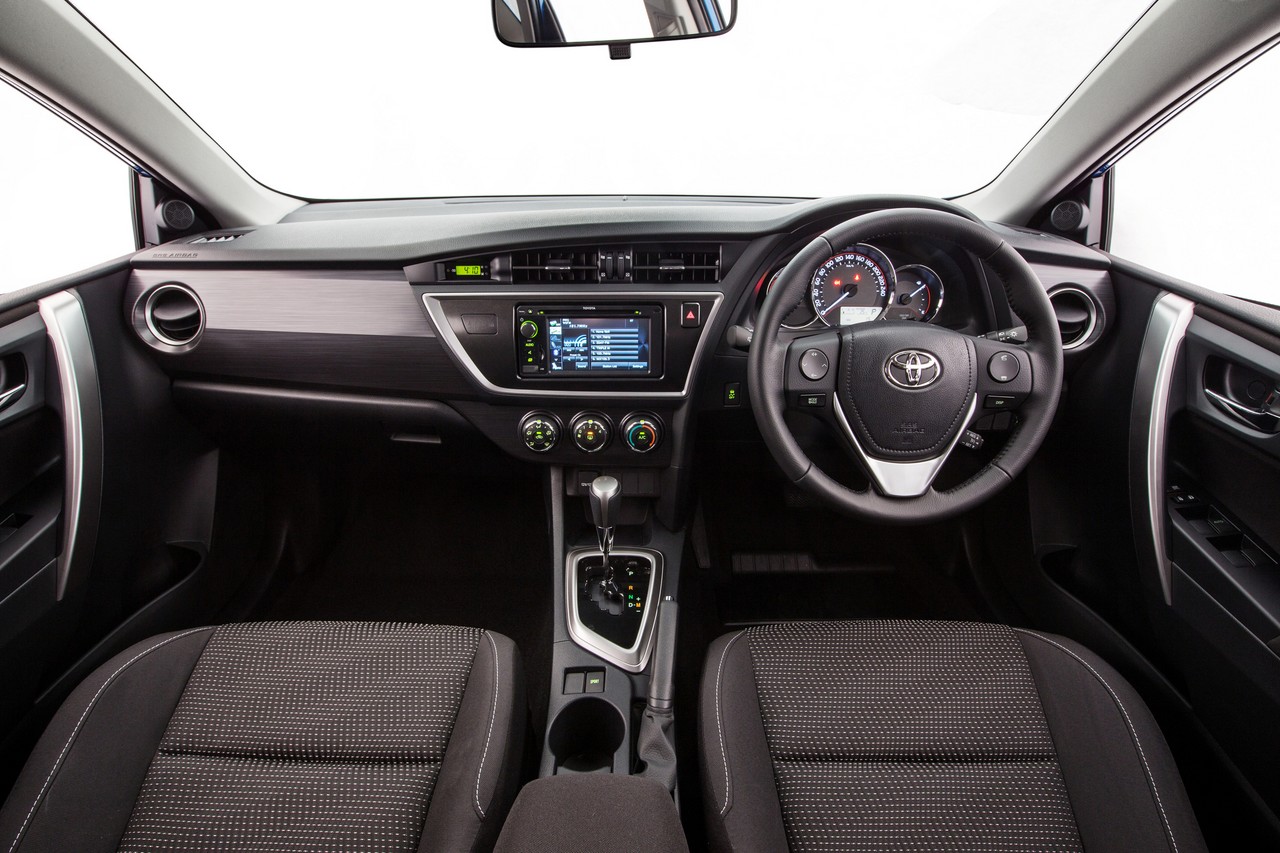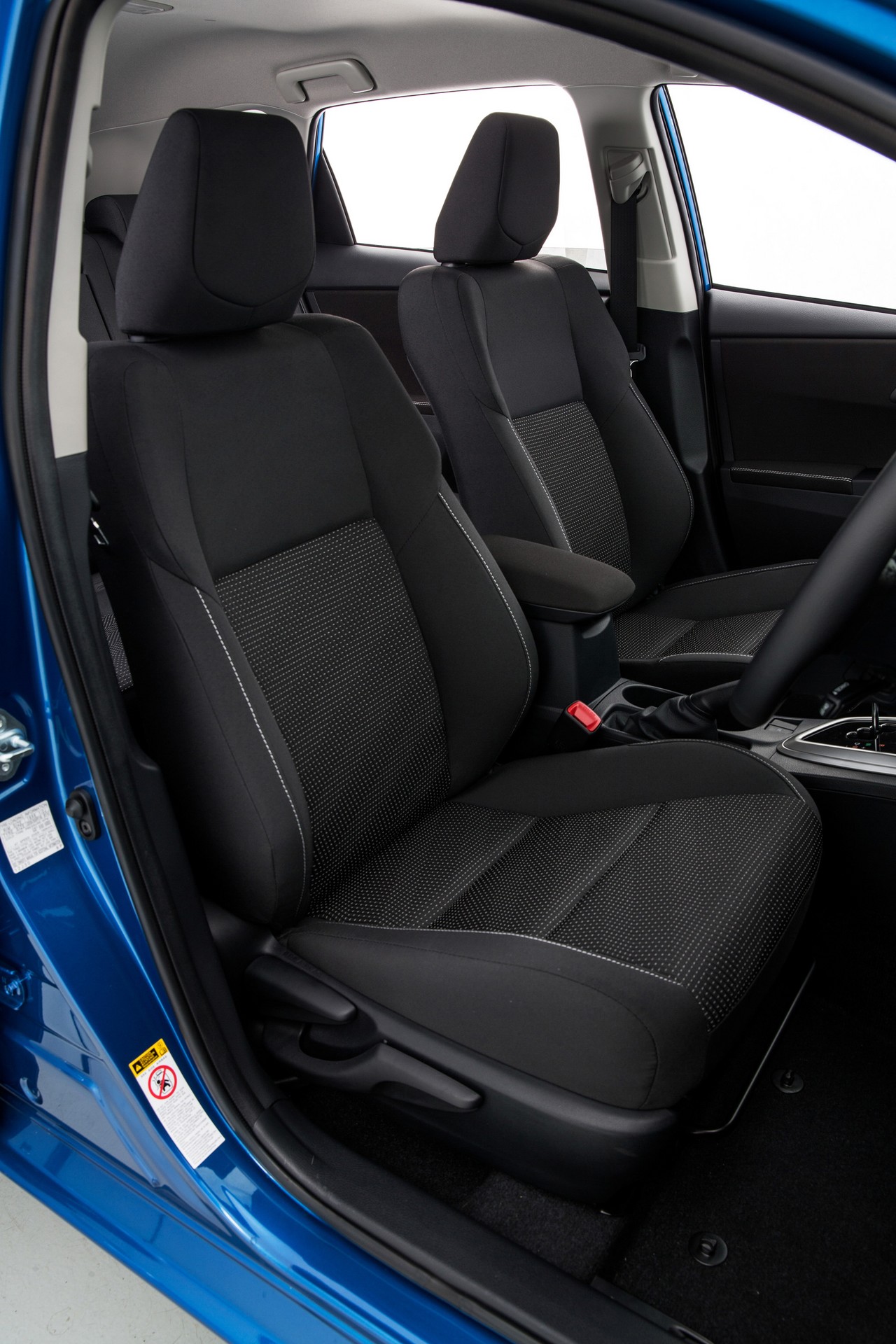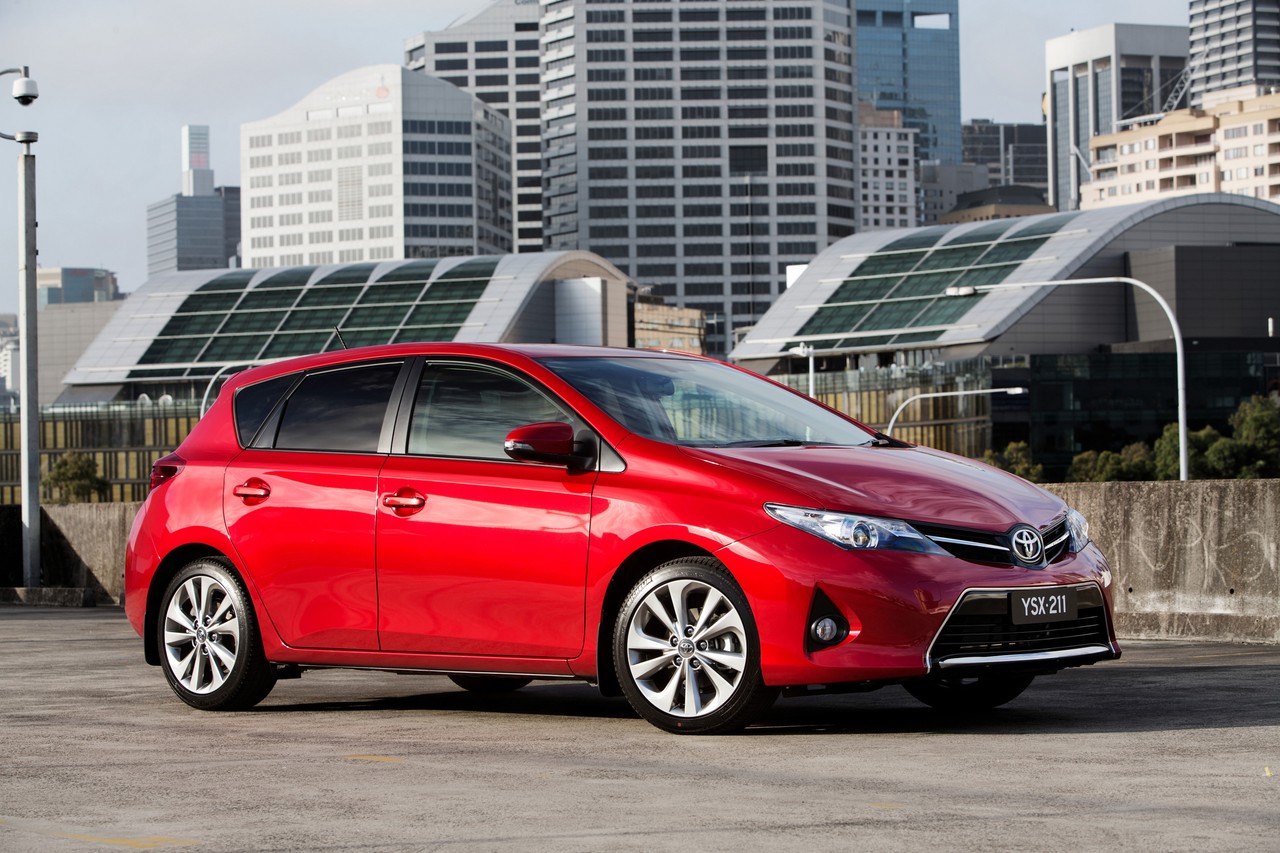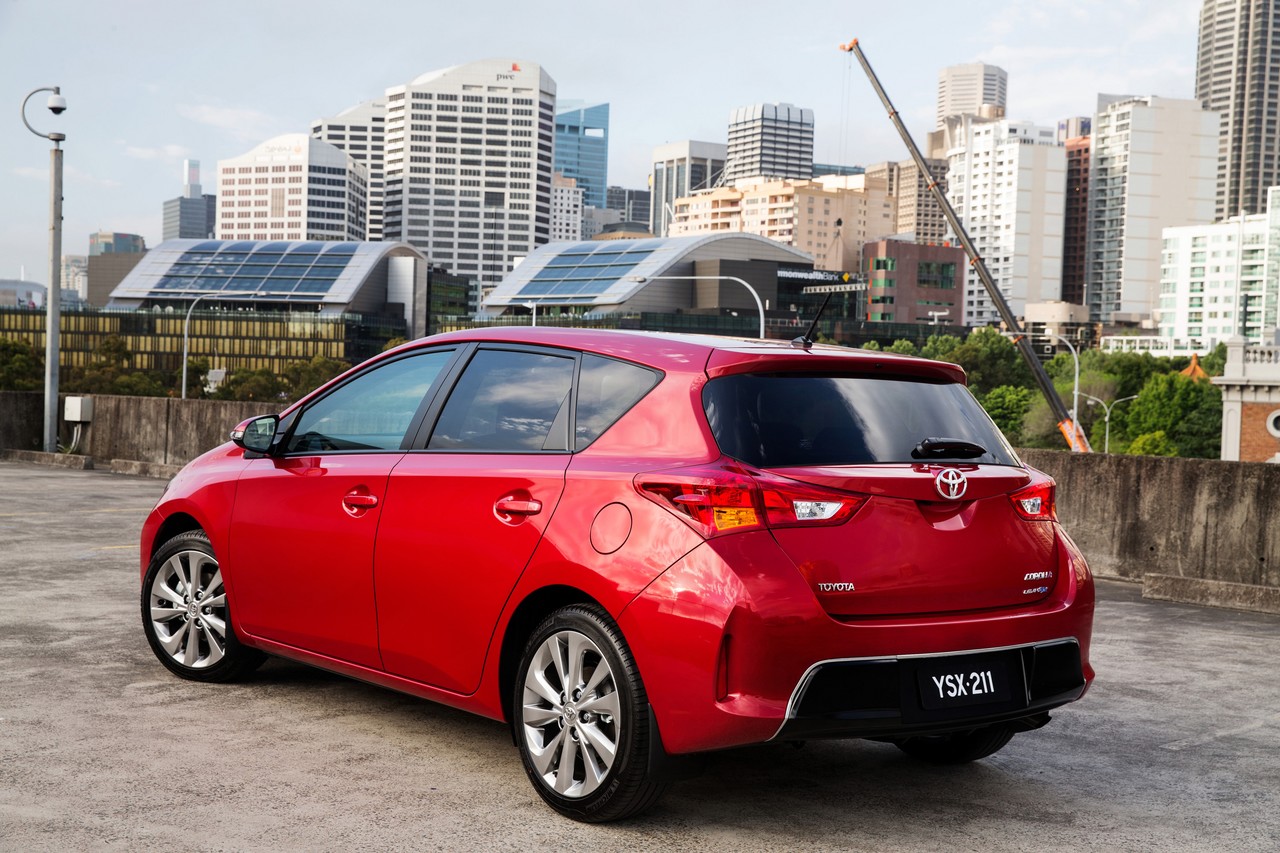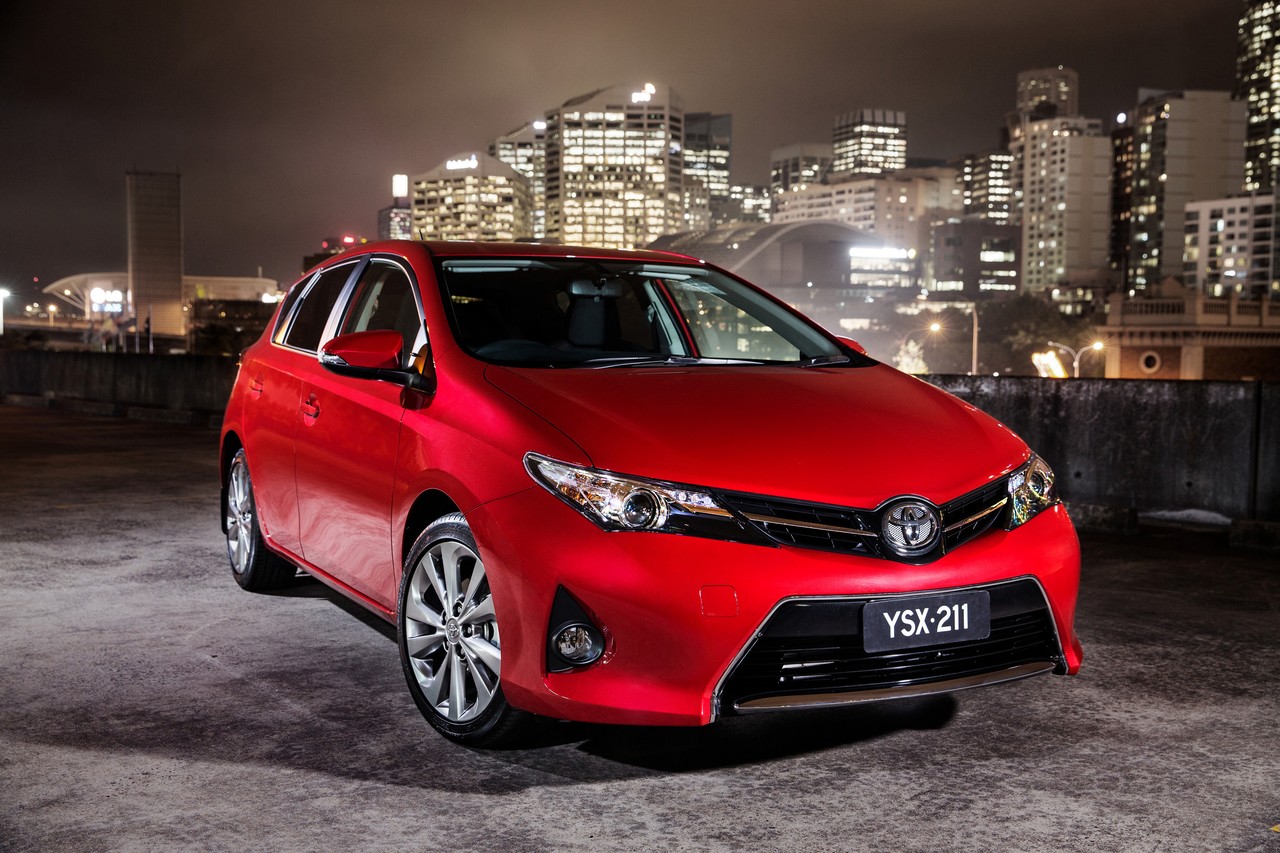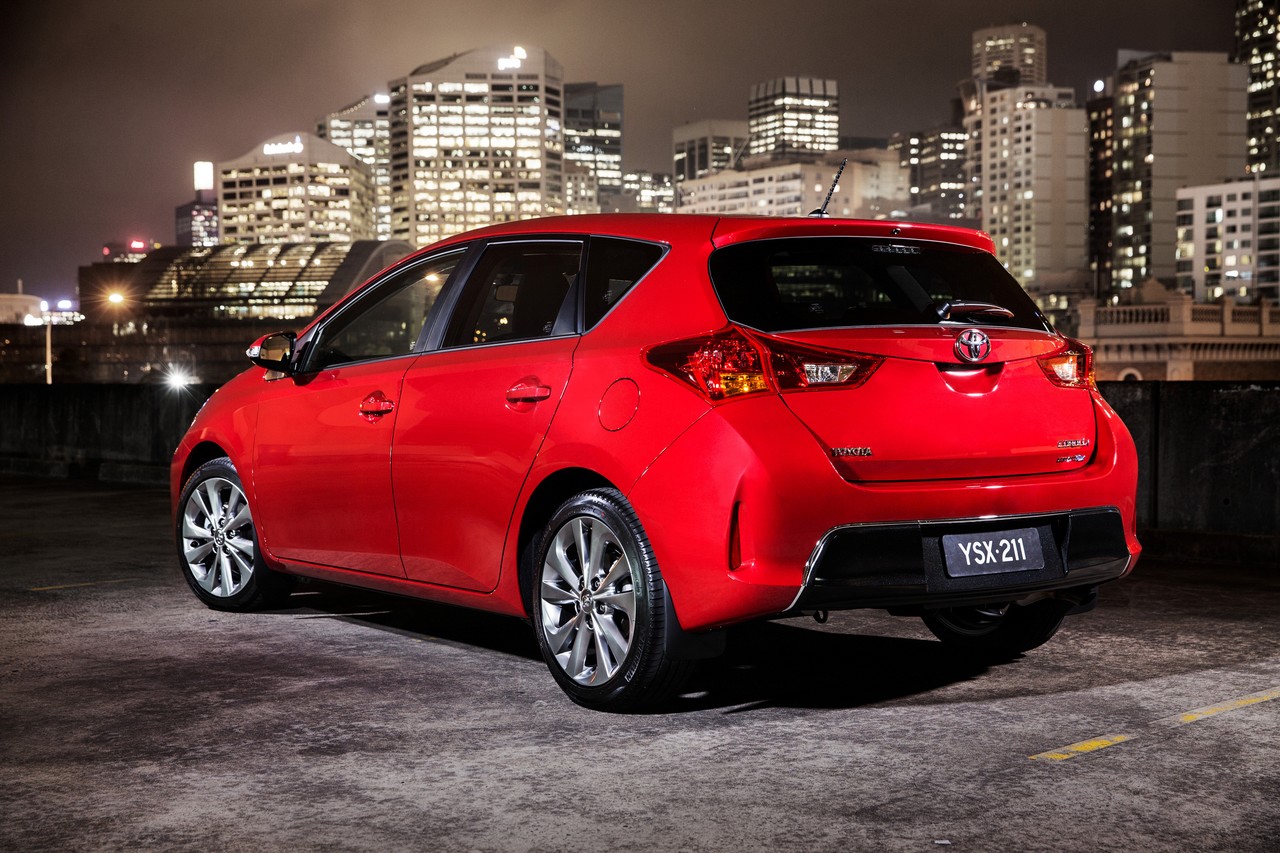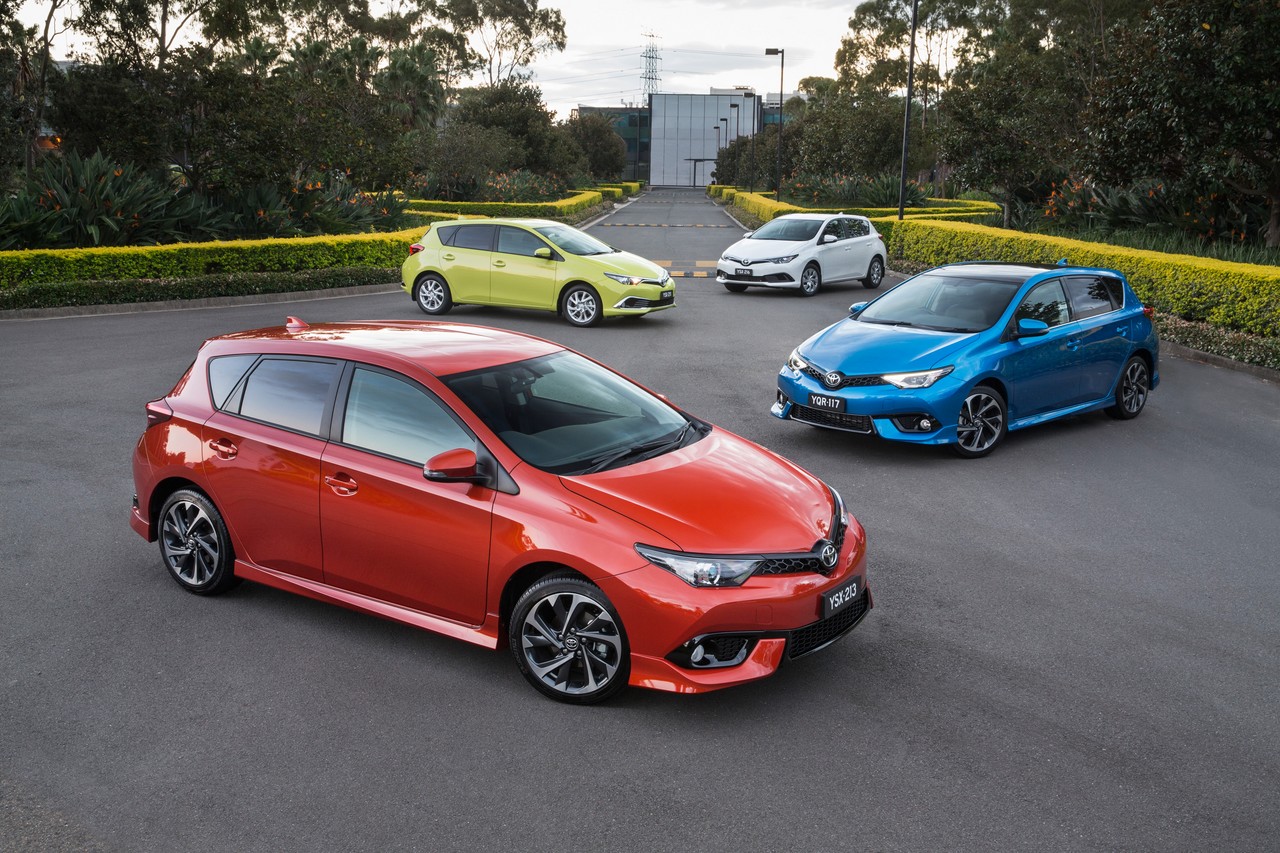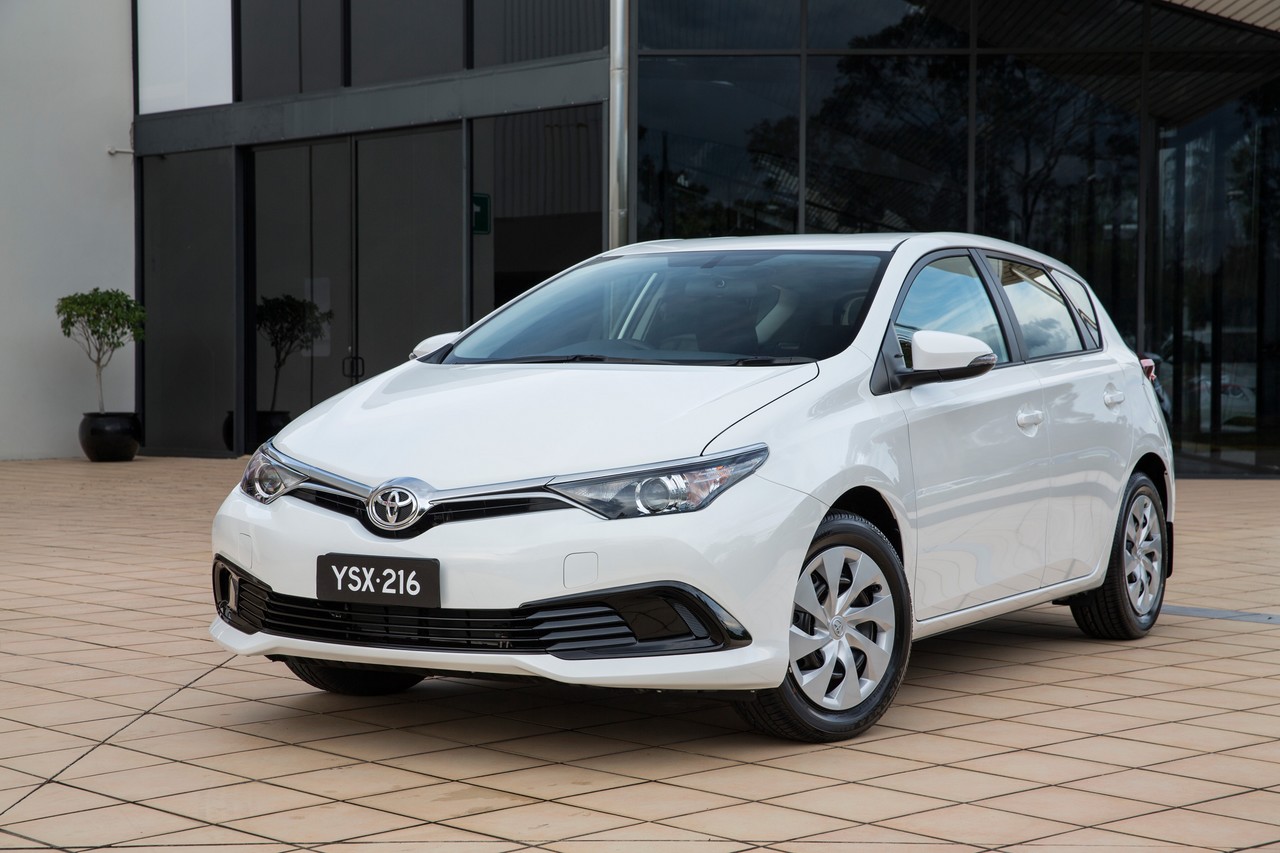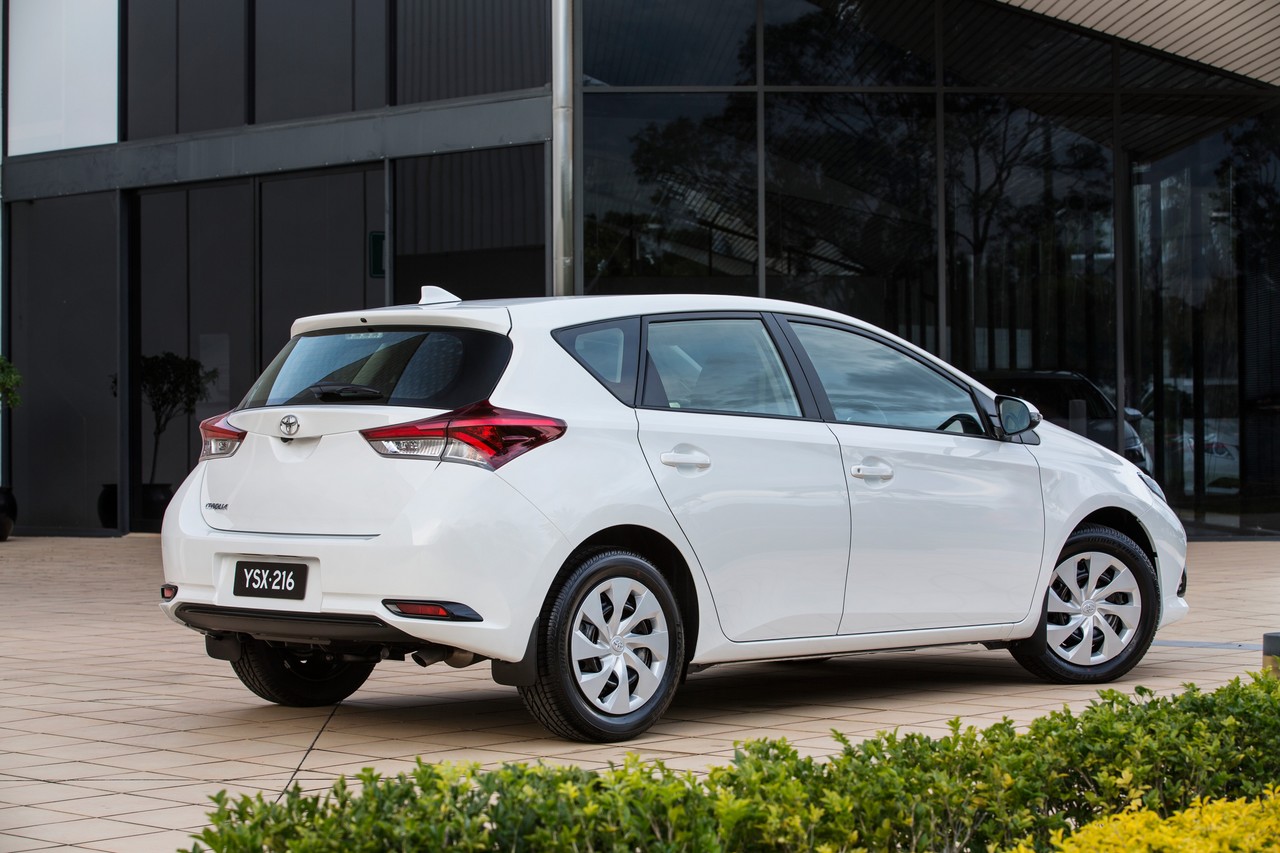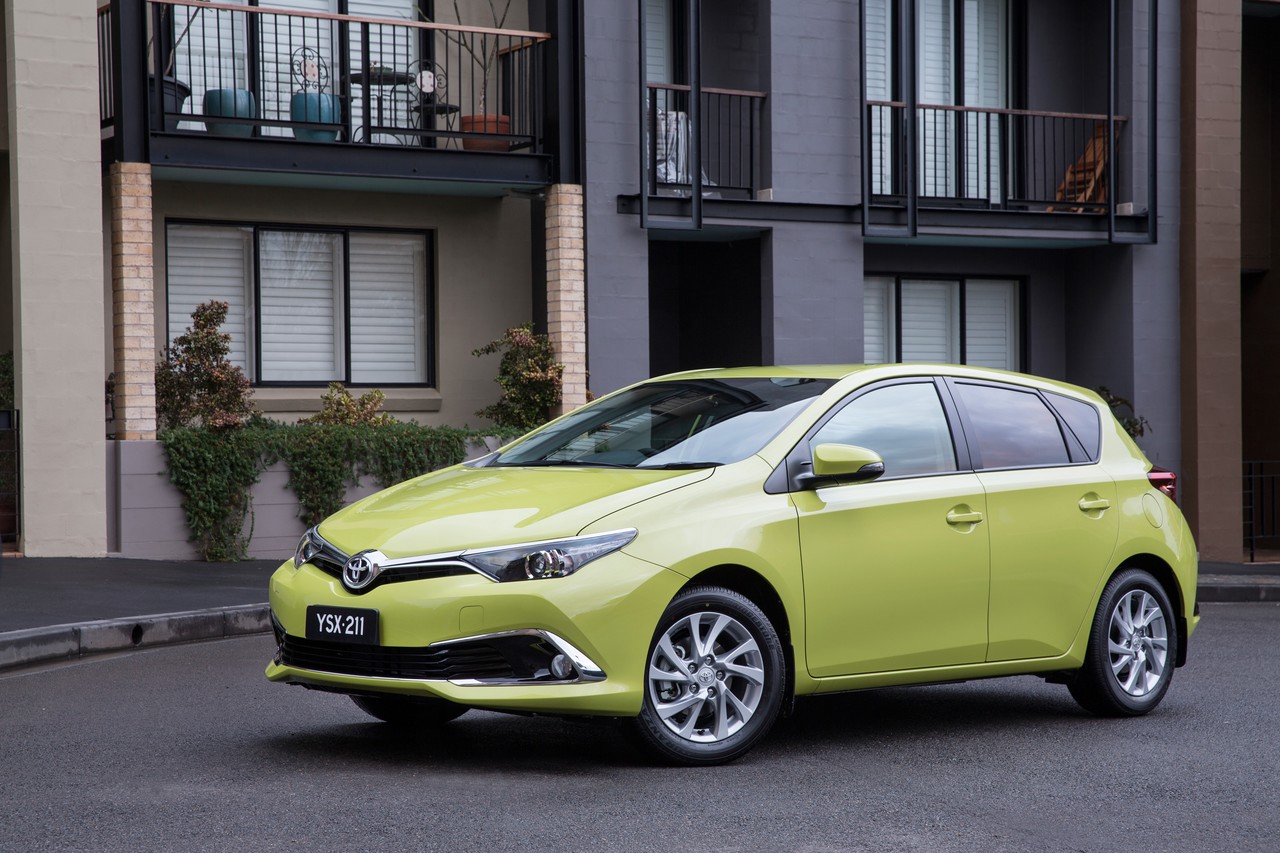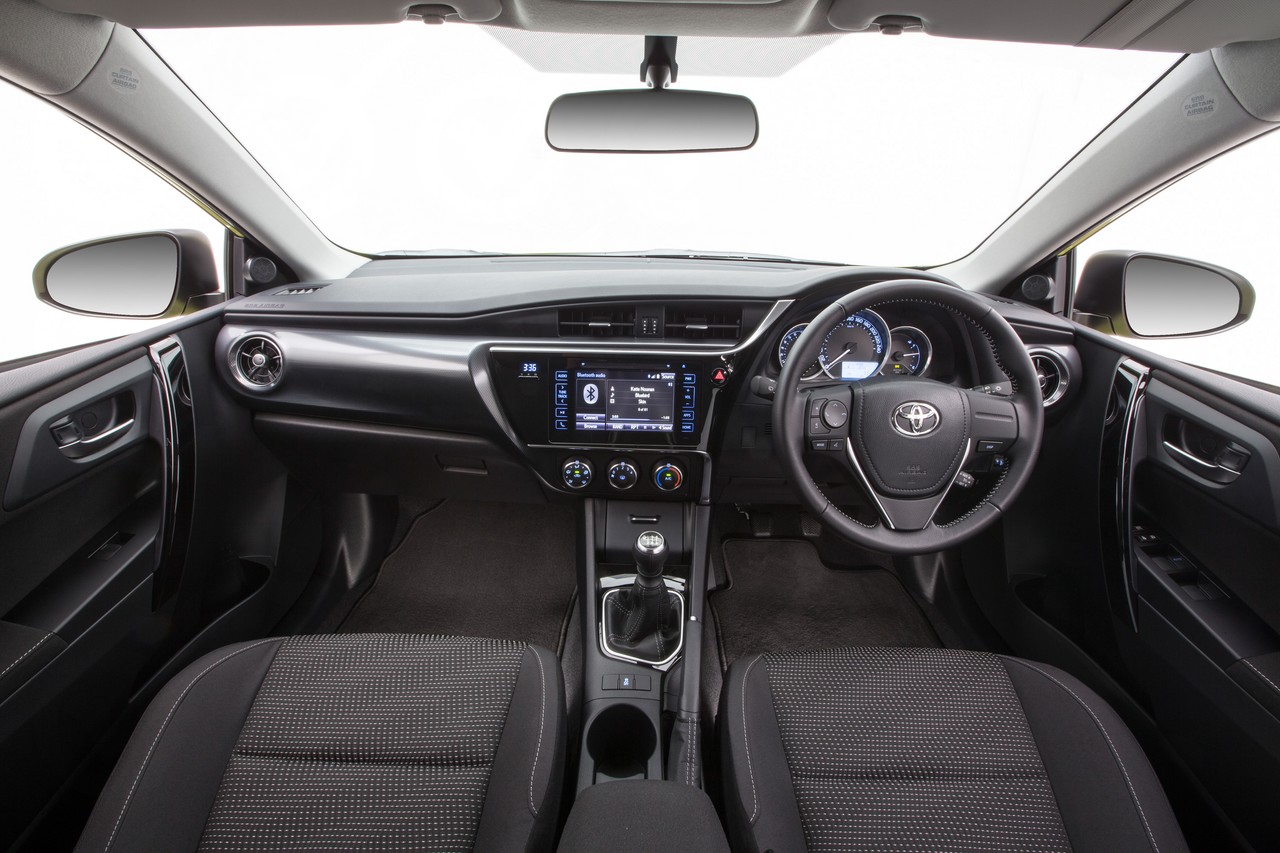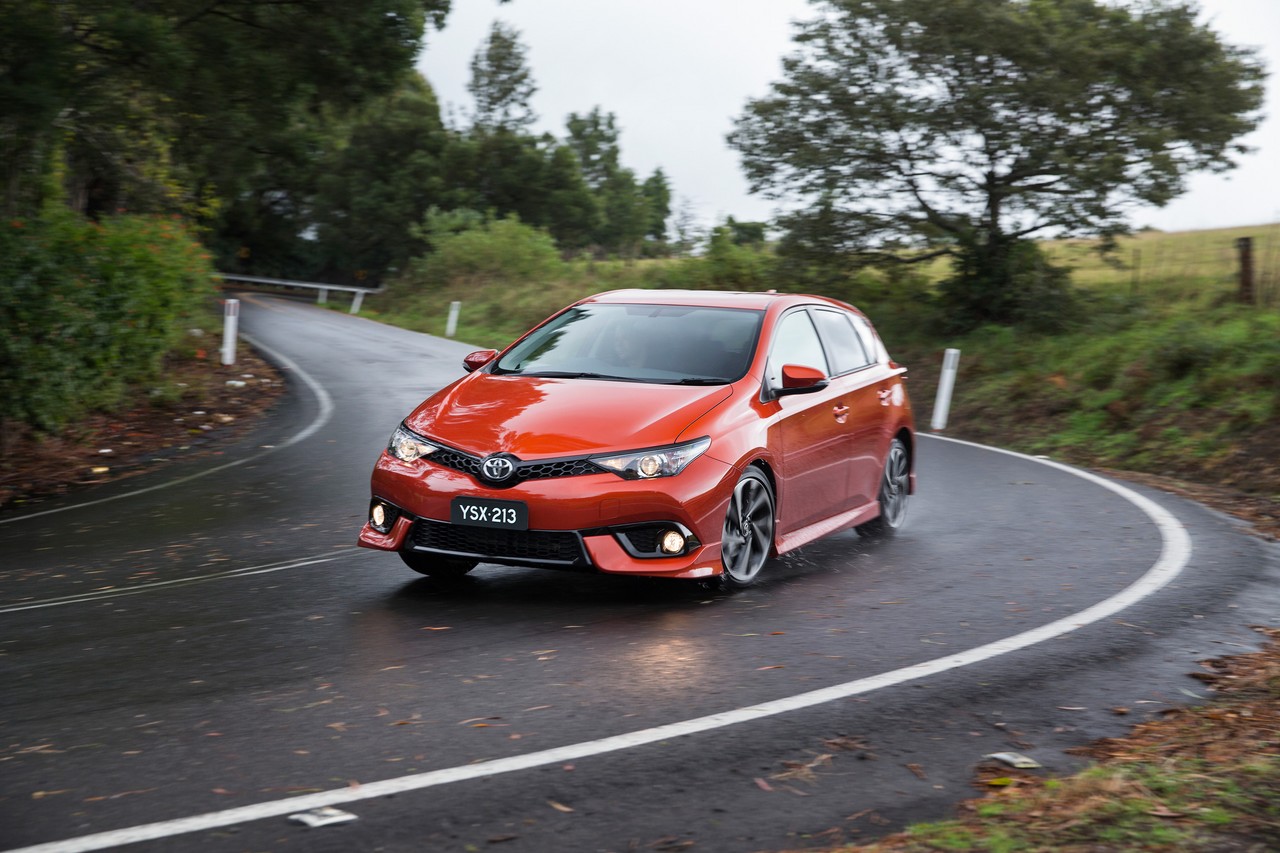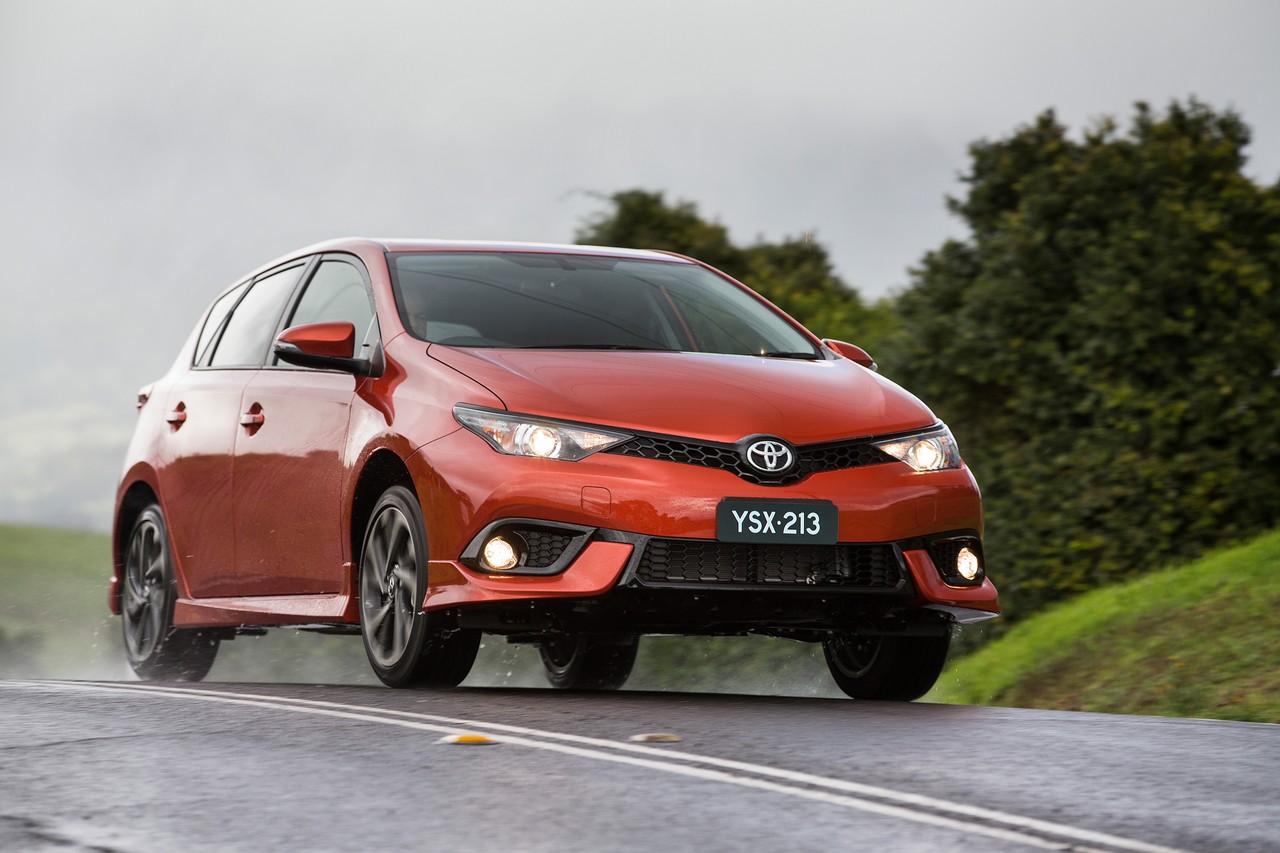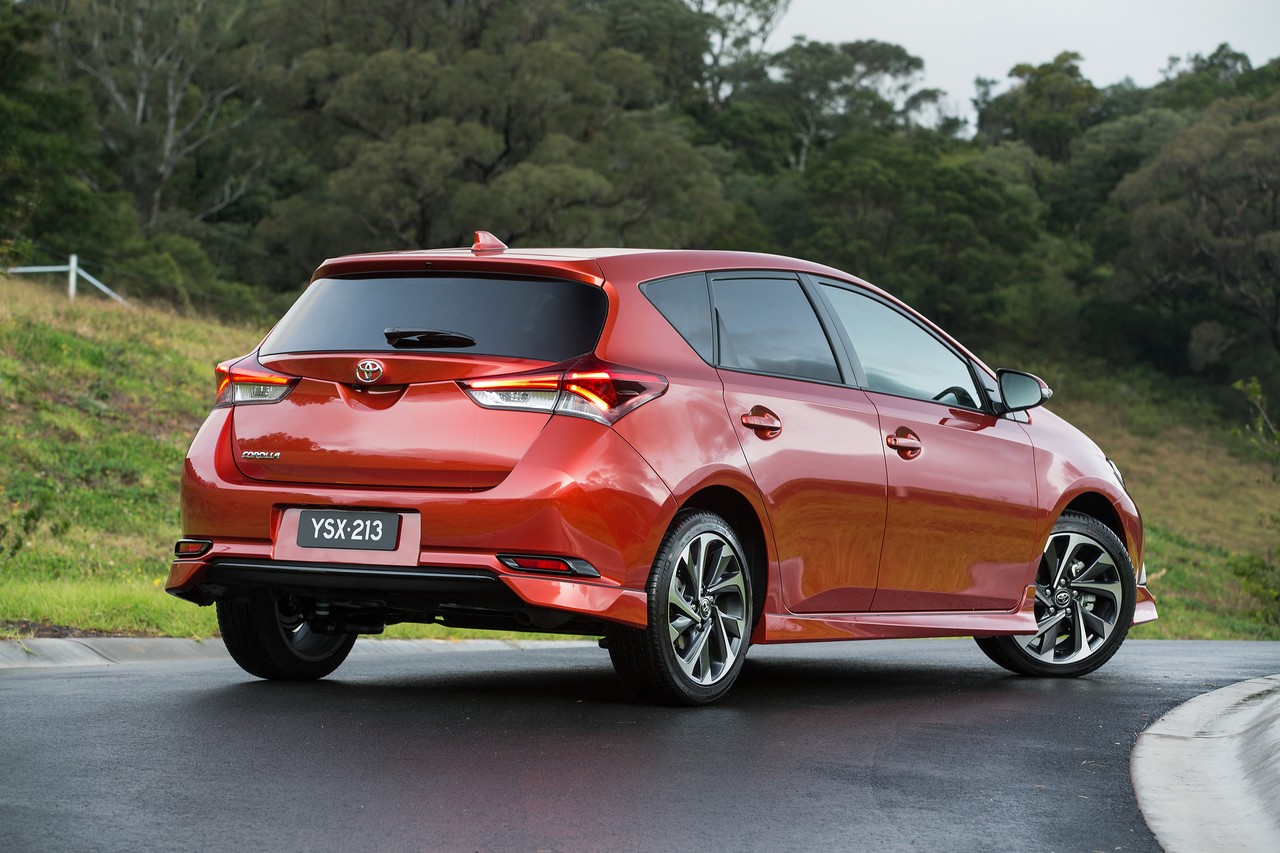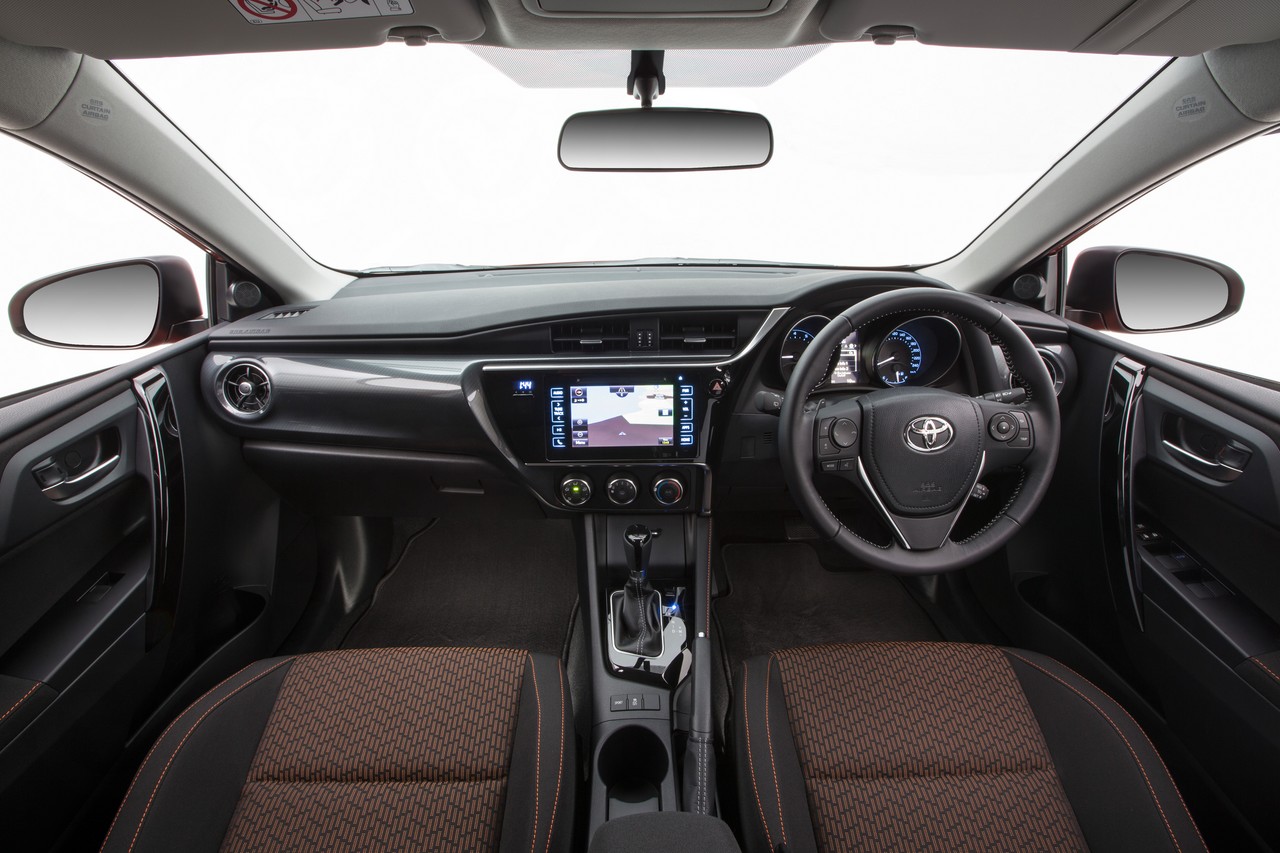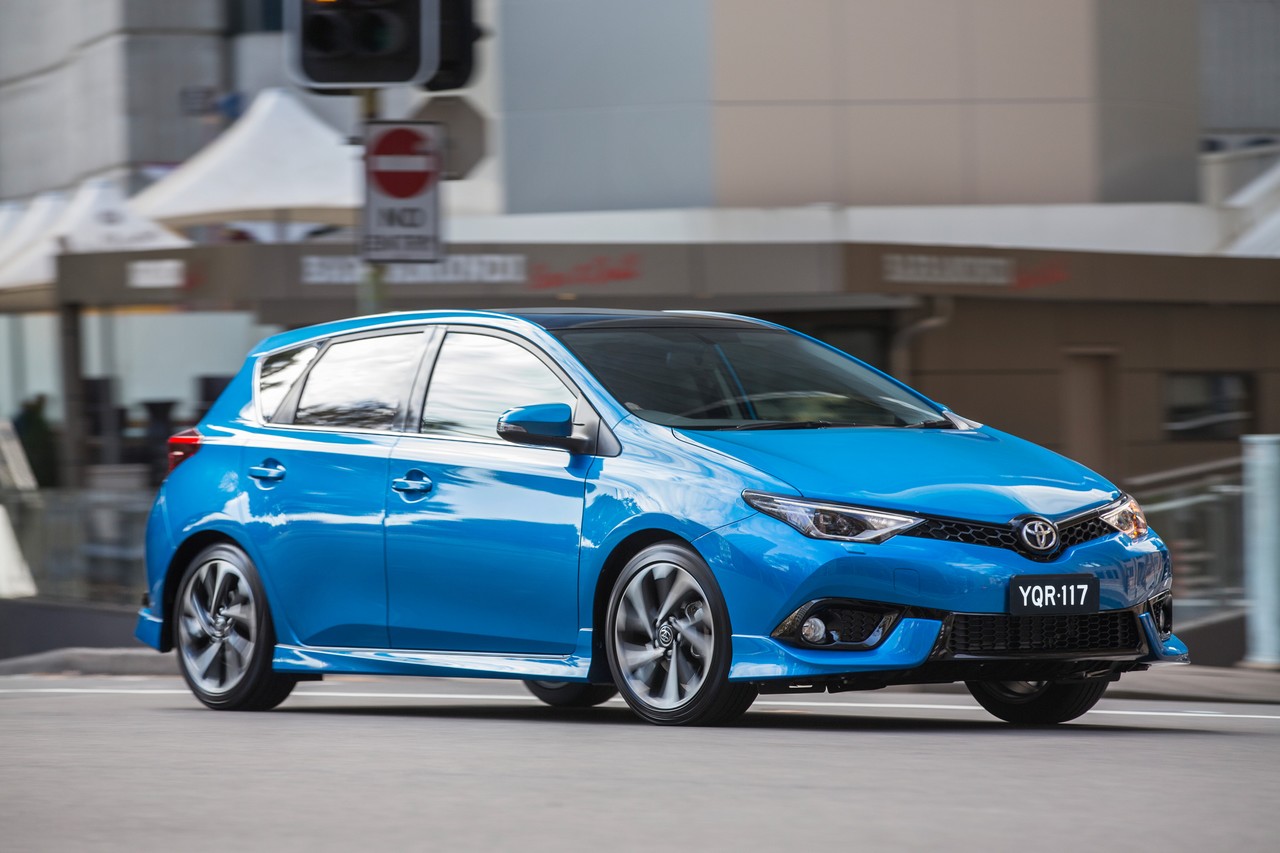
- Willing 1.8-litre 2ZR-FE petrol engine
- Refined manual transmission
- Supportive front seats (especially for Corolla Levin)
- Competent dynamics
- Generally comfortable ride…
- … though torsion beam rear suspension upset by bigger bumps
- Limited headroom (front and rear)
- Engine noise at higher rpm
- Low position of infotainment screen
- Steering precision and dynamics fall short of Mazda BM Mazda3 , Ford Mk.3 Focus and VW Mk.7 Golf
Review: Toyota E180.I Corolla hatch (2012-15)
Overview
Released in October 2012, the Toyota E180 Corolla was a small, five-door hatchback. Manufactured in Miyagi, Japan, the front-wheel drive E180 Corolla was powered by a 1.8-litre four-cylinder petrol engine and available in Ascent, Ascent Sport, Levin SX and Levin ZR variants.
2ZR-FE engine
The 1.8-litre 2ZR-FE four-cylinder petrol engine had an alloy block and cylinder head, double overhead camshafts, four valves per cylinder, variable intake and exhaust valve timing (Toyota’s ‘dual VVT-i’), an acoustic-controlled variable induction system (ACIS) and a compression ratio of 10.0:1.
Manual and CVT transmissions
The engine was mated to either a six-speed manual transmission or continuously variable transmission (Toyota’s K313 ‘MultiDrive S-CVT’). The CVT featured a torque converter to overcome the slipping effect commonly associated with CVTs and seven pre-defined ratios for sequential gearshifts when the Sport mode was activated. As standard, the CVT included a Hill-start Assist Control function to help prevent the vehicle from rolling backwards as the driver removed their foot from the brake and began to depress the accelerator.
Dimensions and body
Compared to the E150 Corolla , the E180 Corolla hatchback was 55 mm longer (at 4275 mm) and 55 mm lower (1460 mm), though width (1760 mm) and wheelbase length (2600 mm) were unchanged. The E180 Corolla hatchback had a drag coefficient of 0.30 Cd, while the driving position and centre of gravity were also lowered. The increased use of high tensile steel, particularly in the upper part of the body structure, contributed to a 10 per cent increase in body stiffness and an overall mass reduction of 40 kg.
Steering and suspension
The E180 Corolla had electric power-assisted steering, MacPherson strut front suspension and torsion beam rear suspension.
| Variant | Engine | Trans. | Peak power | Peak torque | |
|---|---|---|---|---|---|
| Corolla hatch |
Ascent, Ascent Sport, Levin SX, Levin ZR |
1.8-litre petrol I4 (2ZR-FE) |
6sp man., 7sp CVT |
103 kW at 6400 rpm | 173 Nm at 4000 rpm |
Safety equipment
Standard safety equipment for the Toyota E180 Corolla hatchback included dual front airbags, a driver’s knee airbag, front side airbags, full-length curtain airbags, ABS, electronic brake force distribution, brake assist, electronic stability control, traction control and front seatbelts with pretensioners and load limiters.
Brakes
The E180 Corolla hatchback had 275 mm by 22 mm ventilated front brake discs with floating calipers and 259 mm by 9 mm solid rear discs.
ANCAP crash testing
In ANCAP crash testing , the E180 Corolla hatchback received a five star adult occupant protection rating with a score of 35.25 out of 37. In the offset crash test, there was a slight risk of serious chest injury for both front occupants. In the side impact test, maximum points would have been awarded but for a door unlatching after the crash, resulting in a one point deduction.
Features: Corolla Ascent and Ascent Sport
Standard features for the Corolla Ascent included 16-inch steel wheels with 205/55 R16 91V tyres, a six speaker sound system with a CD player, MP3-compatibility, auxiliary inputs (3.5 mm/USB/iPod), Bluetooth mobile phone connectivity with audio streaming and voice recognition, air conditioning, cruise control, 60/40 split and folding rear seats, remote central locking, power windows and mirrors, tilt and telescopic steering wheel adjustment, a rear 12 volt power outlet, trip computer and an immobiliser.
The Corolla Ascent Sport was further equipped with 16-inch ten-spoke alloy wheels, a 6.1-inch touch screen with an SD card slot, front fog lights, a reversing camera with fixed guidelines and rear privacy glass. Visually, the Ascent Sport could be identified by its gloss-black bumper inserts and chrome upper radiator grille.
Features: Corolla Levin SX and Levin ZR
Compared to the Ascent Sport, the Corolla Levin SX featured 17-inch ten-spoke alloy wheels with 215/45 R17 87W tyres, an AVN Audio system with a 6.1-inch LCD touch screen, DivX player (via USB flash drive), contoured front sports seats and a satellite navigation system with SUNA live traffic updates, voice recognition, a split-screen feature and 3D graphics. Visual cues for the Levin SX included black surrounds for the front fog lights, sports upper radiator grille (with black surround), sports instruments and an imitation carbon-fibre instrument panel finish.
For models with CVT transmissions, Levin variants were also fitted with steering wheel gearshift paddles. While the Ascent variants were fitted with full-size spare wheels, the Levin variants had space-saving spare wheels.
Compared to the Levin SX, the Corolla Levin ZR was distinguished by its leather seat trim, heated front seats, dual-zone climate control air conditioning, directional bi-xenon headlights with automatic high beam, daytime LED running lights, keyless entry (i.e. proximity key), power folding and heated door mirrors. The Levin ZR could be identified by its chrome door-belt mouldings and chrome sports radiator grille (both upper and lower sections). The Levin ZR was also offered with an optional $1500 Skyview panoramic roof which extended beyond the rear seats.
2014 Corolla RZ
Released in November 2014, the Corolla RZ was based on the Ascent Sport but further equipped with satellite navigation and branded front floor mats. Visually, however, the Corolla RZ could be identified by its 16-inch black gloss alloy wheels with black caps, black treatments for the grille, bumpers, door mirrors and rear garnish, and black decals at the front, rear and lower door edges. Furthermore, the Corolla RZ was available in Wildfire (red), Inferno (orange), Tidal Blue, Crystal Pearl, Silver Pearl and Positano Bronze paint finishes.
Brochures
- Brochure: Toyota E180 Corolla hatchback (December 2012)
- Brochure: Toyota E180 Corolla hatch and E170 Corolla sedan (June 2014)
Related links
- Press Kit: Toyota E180 Corolla Hatchback (October 2012)
- Toyota Australia: Toyota Corolla
- Wikipedia.org: Toyota E180 Corolla
Review: Toyota E180.II Corolla hatch (2015-18)
Overview
Released in Australia in June 2015, the E180 Series II (E180.II) Corolla introduced a revised range as the Levin SX and Levin ZR variants were renamed SX and ZR. Significantly, fuel economy was improved: over the combined ADR 81/02 test cycle, fuel consumption was 6.7 litres per 100 km for models with manual transmissions and 6.1 litres per 100 km with the CVT.
Interior
Inside, the E180.II Corolla featured new audio systems and upgraded interiors which included new upholstery, a ‘cleaner’ design for the dash panel and centre console, new instrument gauges and satin chrome-plated ornaments. While the Corolla Ascent and Ascent Sport had a three gauge instrument design, the SX and ZR had double gauge instruments that were separated by a 4.2-inch colour display; all variants, however, featured ‘cool blue’ illumination. There were new steering wheels with V-shaped ornamentation, while the gearshift paddles for the Corolla SX and ZR were redesigned for greater ease of use.
Identification
Visually, the E180.II Corolla hatch could be identified by its longer front and rear overhangs, by 35 mm and 20 mm, which resulted in a 55 mm longer body. Furthermore, all models were fitted with a shark-fin antenna.
The Corolla Ascent and Ascent Sport could be recognised by their more prominent front bumper, full-width lower grille, Toyota logo flanked by chrome ‘wings’ and new headlights clusters; the Ascent Sport also had a new design for its ten-spoke 16-inch alloy wheels.
The Corolla SX and ZR were distinguished by their piano-black honeycomb mesh pattern for the upper grille, hexagonal lower grille flanked by sculpted bezels, new 17-inch alloy wheels with machined highlights and bodykit which included front, side and rear skirts and a roof-mounted rear spoiler.
Mechanical changes
As standard, the E180.II Corolla was fitted with a ‘preload’ differential which had a conical spring between the differential case and the side gear. The conical spring applied ‘preload’ in the differential case during light loads and at low differential revolutions, providing torque to limit the speed difference between the driven wheels. According to Toyota, the differential provided smoother acceleration from rest, enhanced steering feel and greater straight-line stability on rough surfaces.
For the CVT, changes included quicker heating of the transmission fluid at start-up and the adoption of an oil-pump system with two modes.
Suspension
For the E180.II Corolla, the front suspension had revised shock absorbers and stabiliser bushes, the twist resistance of the strut bearing was reduced to improve steering feel and the coils had a different shape with lateral force-reducing springs to improve ride comfort; a fluoropolymer coating was also applied to the inner surface of the stabiliser bush. For the torsion beam rear suspension, damping force characteristics were retuned.
Steering
The electric power steering was re-tuned to provide increased steering weight as vehicle speeds increased, providing better feedback between 55 km/h and 80 km/h.
| Variant | Engine | Trans. | Peak power | Peak torque | |
|---|---|---|---|---|---|
| Corolla hatch |
Ascent, Ascent Sport, SX, ZR |
1.8-litre petrol I4 (2ZR-FE) |
6sp man., 7sp CVT |
103 kW at 6400 rpm | 173 Nm at 4000 rpm |
Safety equipment
As standard, all Toyota E180.II Corolla models were fitted with Hill-start Assist Control which was designed to prevent the car from rolling back on an incline as the driver released the brake and applied the accelerator; the improved system could detect when the vehicle was on an incline and automatically apply the brakes for up to two seconds.
From January 2017, the Corolla ZR was fitted – as standard – with Toyota’s ‘Pre-Collision Safety System’ (PCCS) which used a windscreen-mounted camera and LIDAR (light detection and ranging) sensor to monitor objects in front of the vehicle. PCSS included the following technologies:
- Forward Collision Warning (FCW) with Autonomous Emergency Braking (AEB): if there was a risk of collision with an object in front of the vehicle, a warning tone would sound to alert the driver. In its second stage, the system increased braking assistance for faster response. If the driver failed to respond, the system would automatically apply the brakes to reduce vehicle speed (i.e. autonomous emergency braking) and pre-tension the front seatbelts;
- Lane Departure Alert (LDA): could detect lane markings and would warn the driver via an audible tone if the vehicle was about to cross those markings without the driver having activated the indicators; and,
- Automatic High Beam (AHB): detected the headlights of oncoming vehicles and tail-lights of vehicles ahead, enabling the Corolla ZR to switch between high- and low-beam to avoid dazzling other drivers.
As an extra-cost option ($750), the PCSS could also be specified on the Corolla Ascent, Ascent Sport and SX.
Features: Corolla Ascent, Ascent Sport, SX and ZR
Compared to its E180.I predecessor, standard features for the E180.II Corolla Ascent were extended to include a 6.1-inch touch screen display and reversing camera.
The Corolla Ascent Sport gained a seven-inch touch screen and ‘Toyota Link’ connected mobility with apps that could assist the driver to find destinations, petrol stations, weather information and roadside assistance.
Compared to the E180.I Corolla Levin SX, the Corolla SX also gained the ‘Toyota Link’ connectivity system, but – relative to the Ascent Sport – additional functions were available on a subscription basis. Like the E180.I Corolla range, the SX and ZR variants continued to be fitted with satellite navigation.
Unique within the E180.II Corolla range, the Corolla ZR was fitted with bi-LED headlights.
Brochure
Related links
- Toyota Australia: New Corolla Hatch (June 2015)
- Toyota Australia: Corolla lifts style, quality and dynamics (May 2015)
